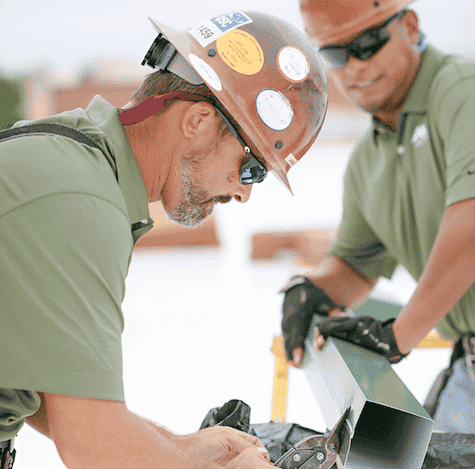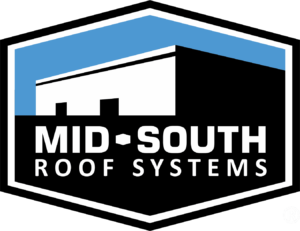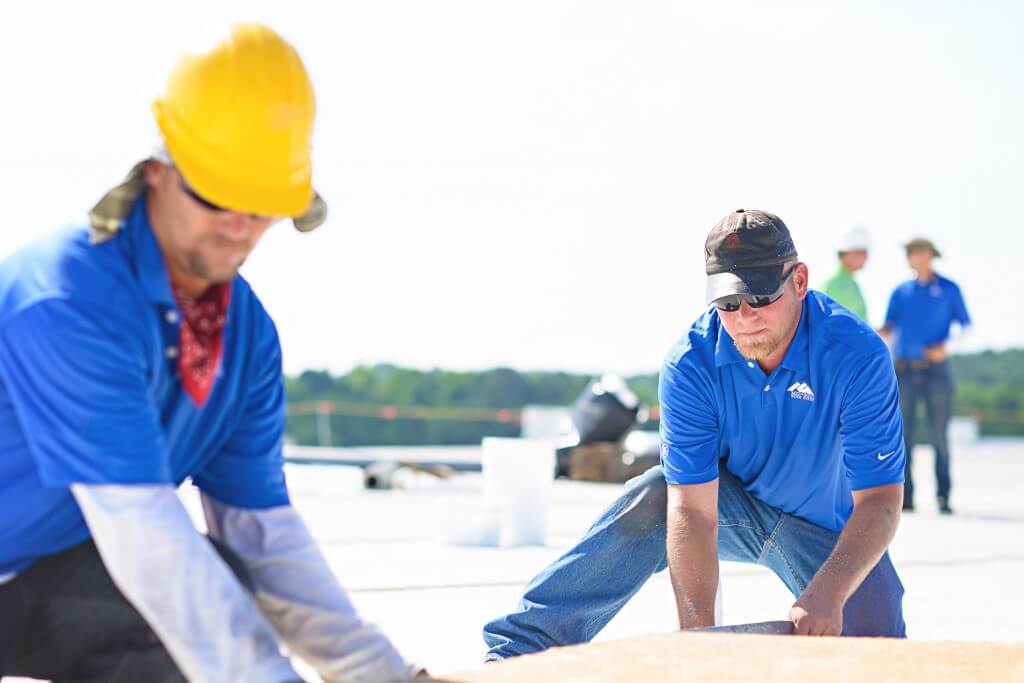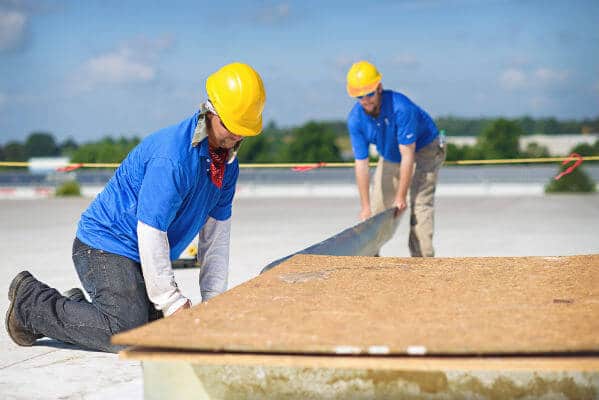Flat Roof Safety Starts With Training But Doesn’t End There


There’s an old saying: “Safety doesn’t happen by accident.”
It takes careful planning, and continuous education for worksite crew and clients alike. A professional roofing contractor will make sure that a building owner or site superintendent is as well-versed in the safety measures of a work site as their own work crew, before the team ever gets started.
Training: Where Safety Begins
Training is an obvious but often-overlooked element to roof safety and accident prevention. New workers train for between one and three days or 12 and 24 hours, depending on the department. Hands-on training involves everything from how to use, wear, and inspect PFAS (personal fall arrest systems) to making sure that electrical equipment is equipped with ground fault circuit interrupters to prevent electrocution.
Stay Two Steps Ahead
Each job is unique, and needs to be guided by its own unique safety protocol. Before even bidding on a job, a safety expert should inspect the job site and identify potential hazards. From there, a site-specific safety plan should be created and shared with the superintendent of the building. Both parties walk through the site, discuss the plan point by point, address any concerns, and make necessary changes.
Create a Safety Plan AND Inform the Key People
Once both parties hammer out an agreement, the safety director sits down with the company foreman — the person who will be responsible for actually implementing the plan on the job site every day. They go over the plan together in detail, and the foreman is advised of what is required, what hazards have been identified, what fall protection is necessary, and how materials will be transported to and from the roof.
These front-end steps — creating a site-specific safety plan, and then making sure that both the building manager and job foreman are on the same page — circumvent countless problems and potential tragedies before they ever occur.
A Continuous Feedback Loop
There is no doubt that the administrators who write the workplace protocols benefit from the hands-on wisdom and direct feedback from workers in the field. Ask your contractor if they meet with their on-site workers to discuss safety and potential changes. If the answer is ‘no’, then you might want to reconsider your roofing partner.
Of course, any safety-conscious roofer should answer with a definitive ‘yes’. But the cream of the crop will take it a step further. Ideally, they’ll bring in a representative from individual roofing crews to sit down with management to discuss incidents, close calls, and employee concerns. Constant improvement is the focus in safety, so this feedback is critical. Learning about near misses can prevent future incidents before they happen.
There is a direct correlation between efficient internal reporting and a lower reportable injury rate (RIR). A minor cut can be dealt with and the injured crewman can be cleared to continue working. If left untreated, it could lead to hospitalization for infection, a recordable injury, and a higher RIR number.
Safe, successful, healthy companies all have something in common — their management supports and prioritizes safety initiatives and truly believe in the need for everyone to come home safely everyday. Safe companies stress communication amongst themselves and partners to prevent tragedies, protect their employees, and continually learn and grow.
Lessons learned from each job, along with industry wide standards and best practices, can be incorporated into an ongoing, in-house educational program and dramatically reduce the frequency of accidents.
LIKE WHAT YOU JUST READ?
Sign up for our newsletter to get fresh articles, updates and more!
Assess, Report and Decide: Get to Know Your New Building’s Roof
If you’re considering buying a new building, the very first item on your list should be to get an assessment of the roof’s condition. This analysis can prevent surprises down the line and—if the roof needs work—it can have a dramatic effect on the price you wind up paying for the building.
Why You Need A Roofer Onsite When You Install Your HVAC System
It’s common to place the heating, ventilating and air conditioning (HVAC) systems for large buildings on the roof. A successful rooftop HVAC installation usually involves the collaboration of an entire team of workers, so that issues related to the roof, structures, electrical and HVAC can be discussed beforehand. If an HVAC system is not coordinated…


